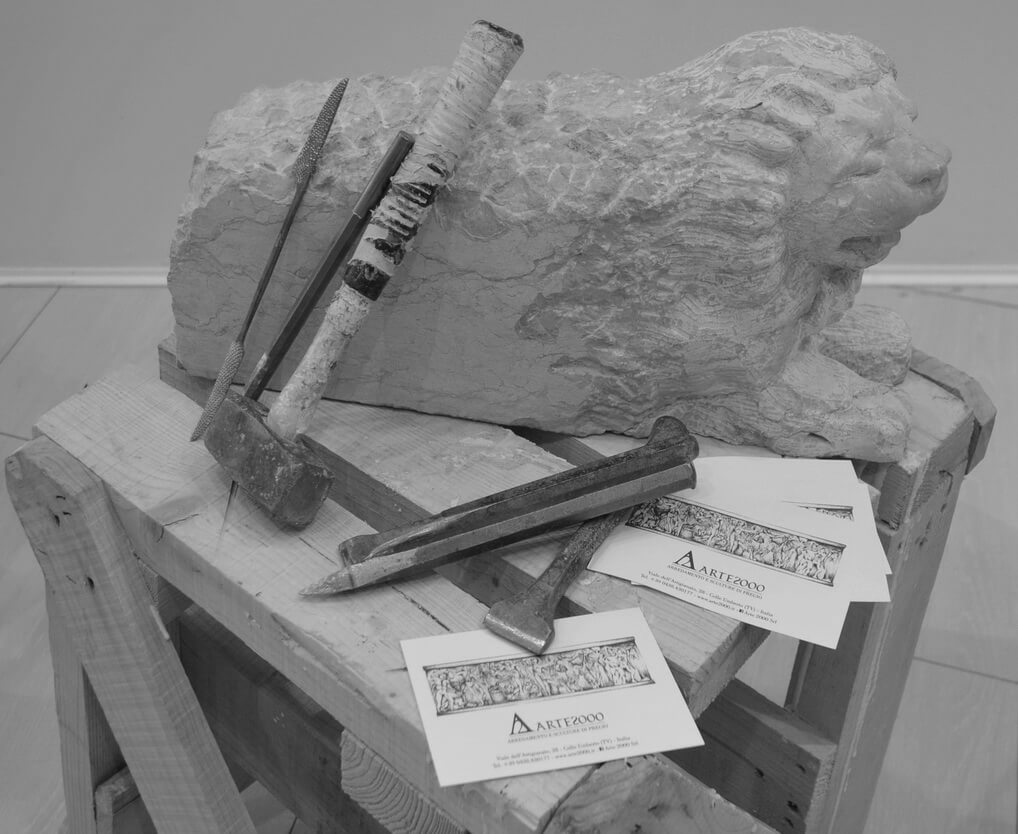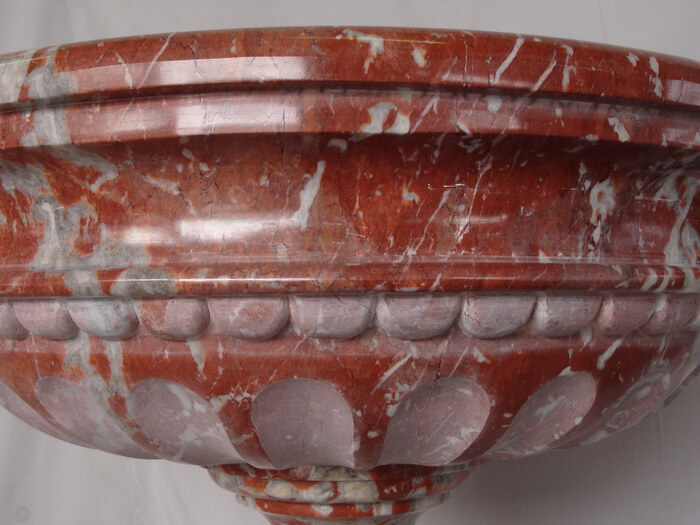
Antique hand tools for the handcrafted marble manufacturing
The antique tools are still in use today for the sculpture and the traditional handcrafted marble manufacturing.
In the past they were in wood or metal and only used with the manual movement. Today they are also electrical and pneumatic made with special materials such as the tempered steel and the hard metal. In order to avoid getting exhausted and to waste energies, it is very important to choose the suitable tool according to the type of operation to be done and to the raw material to be worked.
Classification of the tools according to the type of operation to be done

According to the operation to be done, the tools are classified in two main categories:
- IMPACT TOOLS: they are necessary to break, to extract blocks, to rough-hew, to rough-cut and to shape the stone. They can be used alone to directly hit the stone such as the pick, the mallet, the hammer and the small hammer or in combination with cutting tools such as the chisel, the point chisel and the tooth chisel. Some smoothing and finishing touch operations are made with cutting tools used alone or in combination with a small and light mallet
- ABRASIVE TOOLS: they are used to cut, to pierce, to sculpt, to give depth and to realize the finishing of the surface removing the raw material through the rubbing and friction such as the saw, the drill, the rasp and the file
Choice of the tool according to the raw material to be worked

Every material is suitable for different manufacturings that have to be realized with various techniques and tools.
Today the tools have various shapes and different materials. The choice depends on the raw material to be worked:
- on limestones and sandstones: you use sharp tools in tempered steel that sometimes correspond to those used for the sculpture of the wood. The crystalline structure of the marbles requires precision and experience in the manufacturing. The chisel must be handled with slight beats and held obliquely to the surface to be hit to prevent fractures, cracks and uncontrolled chippings along the veins.
- on porphyrys and granites: you use tools in hard metal with a more rounded shape or rather with a large sharpening edge to prevent that they are flattened with the first beat. They have to be well forged, resistant, solid and kept perpendicular in comparison to the surface to be hit. For example the chisels have a round point and no teeth because they would come off during the carving.
Classification of the raw material according to the workability and polishing
According to the workability and polishing features, the stones are classified in three main categories:
- SEDIMENTARY ROCKS

Soft stones such as limestones, sandstones and alabaster:
– they are soft
– they have a rather uniform compactness
– they are workable in every direction
– they don’t allow to reach a high level of detail
– they can not be polished
- METAMORPHIC ROCKS

Stones with a medium hardness such as the marble:
– they are harder compared to soft stones
– they have an irregular compactness: the presence of internal or externally visible veins and cracks requires extreme care and knowledge
– they allow to make various manufacturings and to define the details
– they can be polished: they allow to make contrast manufacturings among the various phases of polishing, smoothing and shininess
- ENDOGENOUS MAGMATIC ROCKS

Hard stones such as the granite and the porphyry:
– they are hard materials
– thanks to their high hardness and impact resistance, they can be cutted in blocks of big dimensions and used as construction elements
– they can be polished
It is very important to know the raw material
before to choose the suitable tool for every type of manufacturing.
The use of the suitable tool is very important but the artist’s sensibility is decisive for the quality result.
Ndr
We continue to study and to test the use of the antique tools in order to bring together the methods of the past with the current ones.
Today we still use these tools in our workshop to safeguard the traditional techniques.
This article contains general information. For questions and curiosities leave a comment below. If you wish to be contacted, please fill out the form.



